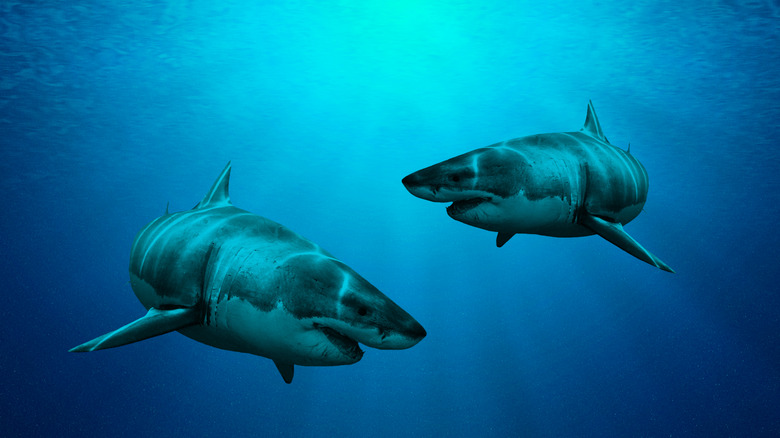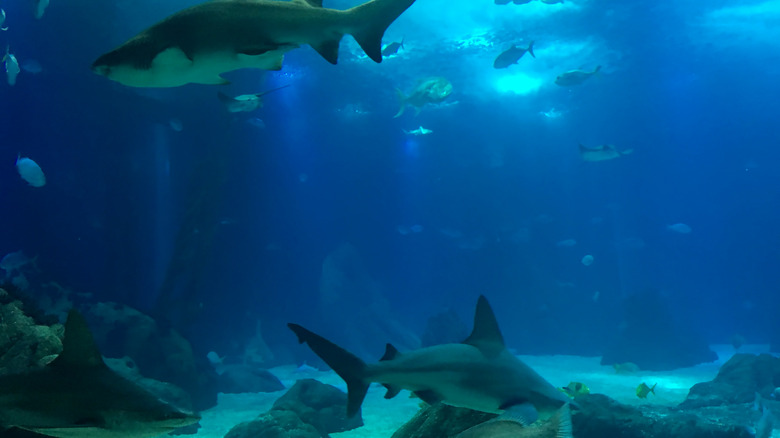The Weird Truth About Glow-In-The-Dark Sharks
Bioluminescence is an ocean oddity that only gets creepier when it gives way to the phenomenon of glow-in-the-dark sharks. Mongabay reports that in 2020, scientists discovered not one, not two, but three spanking-new species of glow-in-the-dark sharks to add to the collection.
Wait. The collection? Well, yes. One little known fact is that approximately 10% of all the sharks we've discovered thus far are of the light-producing variation. Since we have encountered approximately 540 toothy shark species in the deep blue, we have learned that at least 57 of them emit light.
The eerie glow these sharks wear while gliding through the ocean depths is often the result of a chemical reaction between two distinct compounds. One is called luciferin and the other compound is luciferase (via National Geographic). However, this is not true of the three most recently discovered bioluminescent shark species. Baffling scientists, it appears that they do not contain the usual chemical properties, making them most unusual indeed. Marine biologist Jérôme Mallefet told Mongobay reporters that such an enigmatic discovery could mean sharks possess biological components that are either new or previously unknown.
Meet the blackbelly lanternshark, the southern lanternshark, and the kitefin shark
All three of these glow-in-the-dark sharks swam straight out of the Twilight Zone (via Mongabay). No, not the TV Show known for showcasing similar creature features, but the real Twilight Zone. The real-life Twilight Zone is a deep section of the sea that receives very little sunlight but produces some of the most mystifying creatures known to man (via Nature). The blackbelly lanternshark, the southern lanternshark, and the kitefin shark are some of the fascinating latest editions to spring from its depths.
The blackbelly lanternshark, also known as the Lucifer shark (via Planet Shark Divers), is a slender, deep-sea swimmer with a glow-in-the-dark belly who loves to snack on shrimp and squid. The southern lanternshark sports a bladelike jawline and hails from the Etmopteridae family (via Sharkwater). Most elusive of all is the kitefin shark, which is now officially the largest known bioluminescent vertebrate (via Frontiers in Marine Science). He shimmies the sea emitting a haunting blue light that is still yet to be explained.

